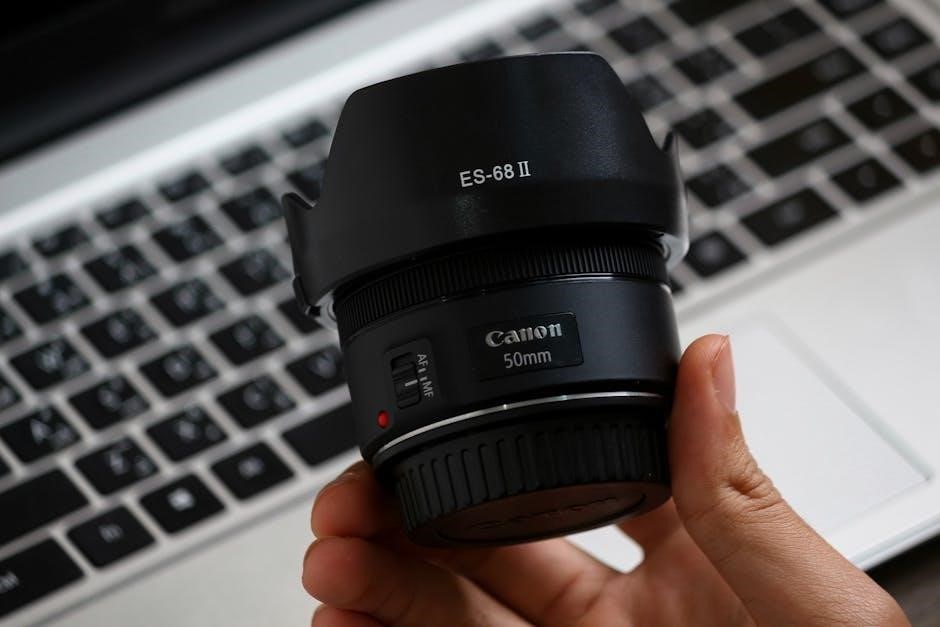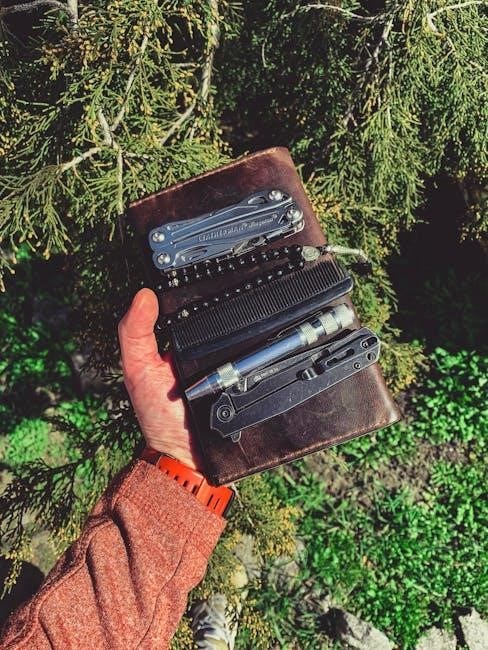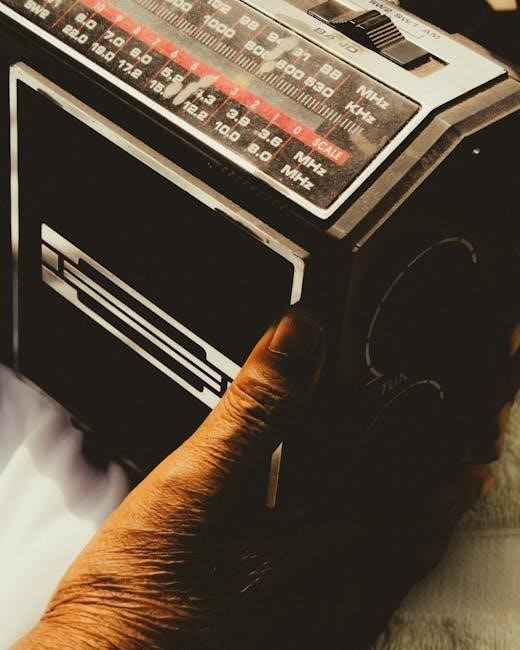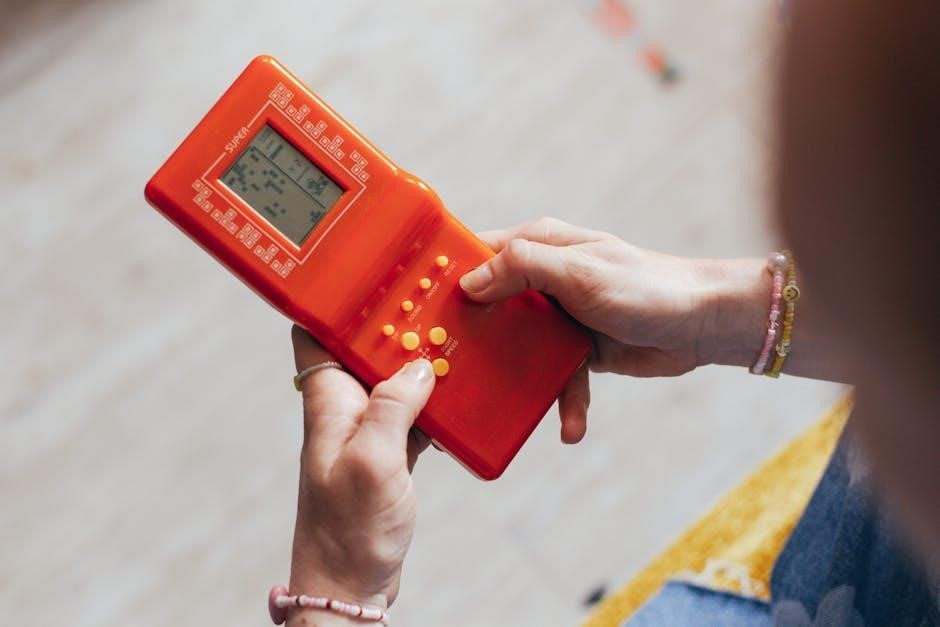Costway Portable Washer Manual: A Comprehensive Guide
This detailed manual provides essential guidance for Costway portable washers, covering installation, operation, troubleshooting, and maintenance for models like FP10021US;
Costway portable washers offer a convenient laundry solution, especially for smaller spaces like apartments, dorms, or RVs. These compact machines provide flexibility and efficiency, eliminating the need for trips to the laundromat. Costway focuses on delivering affordable and practical appliances, and their portable washers are no exception.
Understanding the features and proper operation of your Costway washer is crucial for optimal performance and longevity. This guide will walk you through everything from initial setup and daily use to troubleshooting common issues and performing essential maintenance. Expect to encounter potential problems like motor failures or lid switch malfunctions, which we will address.
Understanding Your Washer Model (FP10021US & Similar)
Costway offers various portable washer models, with the FP10021US being a popular choice. These typically feature a twin-tub design – one for washing and one for spinning. Familiarize yourself with the key components: the washer cover, spin cover, spin drum, and outlet pipe.
The control panel usually includes a timer for selecting wash and spin cycles. Understanding the timer settings is vital for effective cleaning. Many models, like the Giantex/Costway EP21684, share similar functionalities. Note that issues like a timer making noise but the basket not spinning are common complaints. Proper operation and regular maintenance will maximize your washer’s lifespan.
Safety Precautions
Prioritize safety when using your Costway portable washer. Always ensure the unit is properly grounded to prevent electrical shock. Never operate the washer with a damaged power cord or plug. Keep the appliance away from water sources and flammable materials.
Do not attempt to repair the washer yourself; contact qualified customer support for assistance. This instruction booklet contains important safety information – read it thoroughly before use. Disconnect the power supply before cleaning or performing maintenance. Avoid overloading the washer, and always secure the lid during operation to prevent accidents.

Installation and Setup
Proper installation is crucial for optimal performance. This section details unpacking, water supply connections, and electrical requirements for your Costway portable washer.
Unpacking and Inspection
Carefully unpack your Costway portable washer, ensuring all packaging materials are removed from both inside and outside the unit. Inspect the washer thoroughly for any visible damage incurred during shipping, such as dents, scratches, or broken parts. Document any damage with photographs immediately and contact Costway customer support.
Verify that all components are present, including the washer itself, the spin basket, the power cord, inlet hose, and this instruction manual. Retain the original packaging for potential returns or warranty claims. Before first use, wipe down the interior and exterior surfaces with a damp cloth to remove any dust or debris accumulated during storage and transport.
Connecting Water Supply
Your Costway portable washer requires a standard household water faucet connection for operation. Attach the provided inlet hose securely to the washer’s water inlet valve, ensuring a tight, leak-proof fit. Connect the other end of the hose to a suitable water faucet with appropriate water pressure.
Do not use excessive force when tightening connections to avoid damaging the hose or valves. Before starting a wash cycle, verify that the water faucet is fully open and that water is flowing freely through the hose. Regularly inspect the hose for cracks or leaks and replace it if necessary.
Electrical Requirements & Power Issues
Ensure your Costway portable washer is plugged into a grounded, 120V AC outlet that meets the specified electrical requirements outlined in the product specifications. Avoid using extension cords whenever possible; if necessary, use a heavy-duty extension cord rated for the washer’s power consumption.
If the washer fails to start, first check the circuit breaker or fuse box to ensure the outlet is receiving power. Verify the power cord is securely plugged into both the washer and the outlet. If power issues persist, consult a qualified electrician to diagnose and resolve the problem.

Operating Instructions
Proper operation involves carefully loading clothes, using appropriate detergent amounts, selecting the correct wash cycle, and utilizing the spin cycle effectively.
Loading the Washer
Before loading, ensure the washer is on a level surface. Distribute clothes evenly within the wash drum to maintain balance during operation; avoid overloading, as this can hinder cleaning performance and potentially damage the machine. Separate delicate items and heavier garments to prevent damage.
Do not exceed the maximum load capacity specified for your Costway model – typically around 6.6lbs (3kg). Overfilling restricts water circulation and reduces washing effectiveness. Smaller loads generally yield better results, especially for heavily soiled items. Always leave sufficient space at the top of the drum for proper agitation.
Ensure no items obstruct the spin drum or lid closure. Properly distributed loads contribute to quieter operation and extended washer lifespan.
Detergent Usage
Use only high-efficiency (HE) detergents specifically formulated for portable washers to prevent excessive sudsing and residue buildup. Avoid using regular detergents, as they can create too many bubbles, impacting wash performance and potentially causing leaks. Measure detergent carefully, following the manufacturer’s recommendations based on load size and soil level.

Typically, one to two tablespoons of HE detergent are sufficient for a standard load. For heavily soiled items, you may slightly increase the amount, but avoid overdoing it. Liquid detergents are generally preferred, as they dissolve more easily than powders. Always add detergent to the water before adding clothes.
Never pour detergent directly onto fabrics.
Wash Cycle Selection
Costway portable washers typically offer several wash cycle options to accommodate different fabric types and soil levels. Common settings include ‘Normal’, ‘Delicate’, ‘Quick Wash’, and ‘Spin’; The ‘Normal’ cycle is suitable for everyday laundry, while ‘Delicate’ is ideal for lingerie, silk, and other fragile items.
‘Quick Wash’ provides a shorter wash time for lightly soiled clothes, and the ‘Spin’ cycle is used for extracting excess water after washing. Select the appropriate cycle based on the garment care label and the load’s condition. Adjust the wash time using the timer dial, ensuring sufficient time for thorough cleaning.
Remember to always match the cycle to the fabric!
Spin Cycle Operation
The spin cycle effectively removes excess water from your laundry, reducing drying time. After the wash cycle completes, transfer the clothes to the spin drum, ensuring even distribution for balanced operation. Secure the spin cover tightly to prevent water leakage during operation – this is crucial for safety!
Set the spin timer according to the fabric type and desired dryness level. Longer spin times extract more water, but can cause excessive wrinkling. Monitor the machine during the spin cycle; unusual noises or vibrations indicate a potential issue. Always unplug the washer before attempting any maintenance.
Proper spin cycle use minimizes drying time and energy consumption.

Troubleshooting Common Issues
This section addresses frequent problems like the washer not starting, spin cycle failures, motor issues, and lid switch malfunctions – common with portable models.
Washer Won’t Start
If your Costway portable washer fails to power on, begin with the simplest checks. First, verify the power cord is securely plugged into a functioning electrical outlet. Next, inspect your home’s circuit breaker or fuse box to ensure the circuit hasn’t tripped or blown. A tripped breaker is a frequent cause.
Confirm the outlet itself is delivering power by testing it with another appliance. Also, examine the washer’s lid switch assembly; a faulty switch prevents operation. If these steps don’t resolve the issue, there might be a problem with the motor control board, requiring professional diagnosis. Remember safety first – disconnect power before inspecting components!
No Spin Cycle – Common Causes
A Costway portable washer failing to spin often stems from a few key issues. Frequently, a malfunctioning lid switch prevents the spin cycle from engaging as a safety measure. Inspect the lid switch assembly for damage or proper function. Another common culprit is a worn or broken drive belt, which connects the motor to the spin drum.
The coupler, linking the motor and transmission, can also fail. Additionally, a clogged fleece filter restricts water drainage, hindering spin performance. Finally, motor failure itself can be the root cause. Always disconnect power before inspecting internal components!
Motor Failure Symptoms & Solutions
Motor failure in your Costway portable washer manifests in several ways. A complete lack of operation, unusual noises like grinding or humming, or a burning smell are key indicators. If the motor strains but doesn’t turn the drum, it suggests a potential issue. Before assuming motor failure, verify power supply and check the lid switch.
If the motor is indeed faulty, replacement is often the most practical solution. Disconnect power before any inspection! Diagnosing the motor control board can help confirm the motor’s condition. Professional repair is recommended if you’re uncomfortable with electrical components.
Lid Switch Malfunctions
A malfunctioning lid switch is a common cause of operational issues in Costway portable washers, preventing both wash and spin cycles from initiating. The washer won’t start if the lid switch doesn’t register the lid being securely closed. Symptoms include the motor not engaging even when power is supplied.
Carefully inspect the lid switch for damage or misalignment. Testing the switch with a multimeter can confirm its functionality. Replacement is often straightforward, but always disconnect power first. Ensure the new switch is properly aligned and securely fastened to restore operation. A faulty lid switch is a safety feature preventing operation with an open lid.

Maintenance and Care
Regular cleaning, fleece filter maintenance, and adherence to a schedule will maximize your Costway portable washer’s lifespan and ensure optimal performance consistently.
Cleaning the Washer
Maintaining a clean washer is crucial for optimal performance and longevity. After each use, wipe down the exterior surfaces with a damp cloth to remove any spills or residue. Periodically, run an empty wash cycle with a cup of white vinegar to help eliminate odors and mineral buildup within the drum.
Pay close attention to the spin drum and outlet pipe, ensuring they are free from lint and debris. Inspect the washer cover and rain cover for any accumulation of dirt, cleaning them as needed. Regular cleaning prevents mold and mildew growth, preserving the washer’s efficiency and extending its lifespan. Avoid harsh chemicals or abrasive cleaners, as they can damage the washer’s components.
Fleece Filter Removal & Cleaning
The fleece filter plays a vital role in capturing lint and debris, preventing them from recirculating during the wash cycle. Regularly removing and cleaning this filter is essential for maintaining optimal washer performance. Locate the fleece filter – typically found near the outlet pipe – and carefully remove it according to the manual’s instructions.
Rinse the filter thoroughly under running water, removing all accumulated lint and particles. For stubborn buildup, use a soft brush to gently dislodge debris. Ensure the filter is completely dry before reinstalling it, preventing potential mold growth. A clean fleece filter ensures efficient drainage and prevents clogging, contributing to a longer washer lifespan.
Regular Maintenance Schedule
To ensure the longevity and efficiency of your Costway portable washer, adhere to a consistent maintenance schedule. After each use, wipe down the exterior with a damp cloth and leave the lid ajar to prevent mildew. Monthly, thoroughly clean the fleece filter, removing any accumulated lint. Every three months, inspect the inlet and outlet hoses for cracks or leaks, replacing them if necessary.
Annually, consider a deeper cleaning, including disinfecting the wash tub. Regularly check the power cord for damage. Following this schedule will minimize potential issues and maintain peak performance, saving you time and money on repairs in the long run.

Component Overview
Key components include the washer cover, spin cover, spin drum, outlet pipe, fleece removal filter, and the crucial door latch assembly for safe operation.
Washer Cover & Spin Cover
The washer cover serves as the primary housing for the washing tub, protecting internal components from damage and ensuring safe operation during the wash cycle. It’s designed to prevent water leakage and maintain the structural integrity of the machine. The spin cover, often a transparent plastic component, is crucial during the spin cycle.
Its purpose is to securely contain the laundry within the spin drum, preventing items from escaping at high speeds. Properly securing the spin cover is paramount for safety, as an improperly fitted cover can lead to malfunctions or even injury. Regularly inspect both covers for cracks or damage, replacing them if necessary to maintain optimal performance and safety. A rain cover may also be present for added protection.
Spin Drum & Outlet Pipe
The spin drum is the perforated cylinder responsible for extracting water from clothes during the spin cycle. Its design allows water to escape through the perforations while retaining the laundry inside. Regularly check the drum for any obstructions or damage, as foreign objects can disrupt the spinning process and cause noise.
The outlet pipe is a vital component for draining wastewater from the washer. Ensure it’s securely connected and positioned to prevent leaks or backflow. Inspect the pipe for kinks or blockages, which can hinder drainage and lead to operational issues. Proper maintenance of both the spin drum and outlet pipe is essential for efficient and reliable washer performance.
Door Latch Assembly
The door latch assembly is a critical safety feature, preventing the washer from operating when the door is open. It ensures the lid is securely closed during both wash and spin cycles, protecting users from potential hazards. A malfunctioning latch can prevent the washer from starting or cause it to stop mid-cycle.
Regularly inspect the latch for damage or wear, and ensure it engages firmly with the door. If the latch is faulty, it must be replaced immediately to restore safe operation. Troubleshooting often involves checking the latch switch and its wiring connections. A properly functioning door latch assembly is paramount for safe and reliable use.

Advanced Troubleshooting
For persistent issues, inspect the coupler, drive belt, lid switch, door latch, clutch, and motor control board for damage or malfunctions.
Checking the Coupler
The coupler connects the motor to the transmission, and is a frequent failure point in Costway portable washers. To inspect it, disconnect the power and access the coupler – typically located behind the washer cabinet.
Visually examine the coupler for cracks, breaks, or excessive wear. A damaged coupler will often exhibit signs of deterioration, like crumbling rubber or missing sections. Gently attempt to rotate the coupler by hand; excessive play or a clicking sound indicates a problem.
Replacement is usually necessary if damage is found. Ensure the new coupler is compatible with your specific Costway model before installation, and follow the manufacturer’s instructions carefully.
Inspecting the Drive Belt
The drive belt transmits power from the motor to the spin basket. Begin by disconnecting the power supply to the washer before accessing the belt, usually located beneath the outer tub.
Carefully examine the belt for signs of wear, such as cracks, fraying, or stretching. A loose or damaged belt will prevent the spin cycle from functioning correctly. Check the belt’s tension; it should have some give, but not be excessively slack.
If the belt is damaged, replacement is required. Ensure you obtain the correct replacement belt for your Costway washer model and follow the installation instructions precisely.
Clutch Inspection
The clutch engages and disengages the spin basket during wash and spin cycles. A faulty clutch is a common cause of a washer failing to spin, even if the motor is functioning. Accessing the clutch typically requires removing the cabinet and potentially the spin basket.
Inspect the clutch for worn or broken components, such as the clutch shoes or springs. Look for signs of grease buildup or damage. A worn clutch may slip during the spin cycle, resulting in slow or no spinning.
If the clutch is damaged, replacement is often necessary. Ensure you use the correct replacement part for your Costway model.
Motor Control Board Diagnostics
The motor control board is the brain of the washer, regulating all functions. Diagnosing issues requires caution, as it involves electrical components. Visually inspect the board for burnt components, swollen capacitors, or damaged traces.
Use a multimeter to test for continuity and voltage at various points on the board, following a wiring diagram if available. A lack of voltage or continuity can indicate a faulty component.
Replacing the motor control board is often the solution for complex electrical problems, but ensure compatibility with your specific Costway washer model before purchasing.

Warranty Information
Costway provides warranty details for their portable washers, covering manufacturing defects. Contact customer support for claims and assistance with your specific model.
Costway Warranty Details

Costway’s warranty coverage for portable washing machines, including models like the FP10021US, typically covers defects in materials and workmanship for a specified period from the date of original purchase. The standard warranty duration is often one year, but it’s crucial to review your specific product documentation for exact terms.
This warranty generally excludes damage resulting from misuse, abuse, accidents, modifications, or normal wear and tear. It also doesn’t cover issues caused by improper installation or failure to follow the operating instructions outlined in this manual. To initiate a warranty claim, retain your proof of purchase and contact Costway’s customer support team.
Warranty service may involve repair or replacement of defective parts at Costway’s discretion.
Contacting Customer Support
For assistance with your Costway portable washer, including troubleshooting, warranty claims, or replacement parts, reaching their customer support team is essential. Costway provides multiple channels for contacting them, ensuring convenient access to help. You can typically find contact information on their official website, often including an email address and a phone number.
When contacting support, be prepared to provide your washer’s model number (like FP10021US), purchase date, and a detailed description of the issue you’re experiencing. Having this information readily available will expedite the support process.
Costway aims to provide prompt and helpful assistance to resolve your concerns efficiently.

Be First to Comment